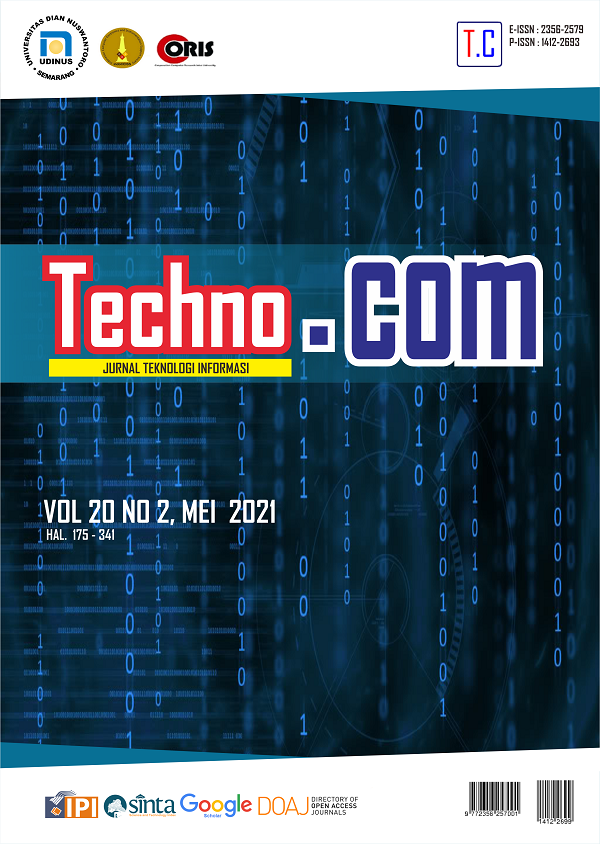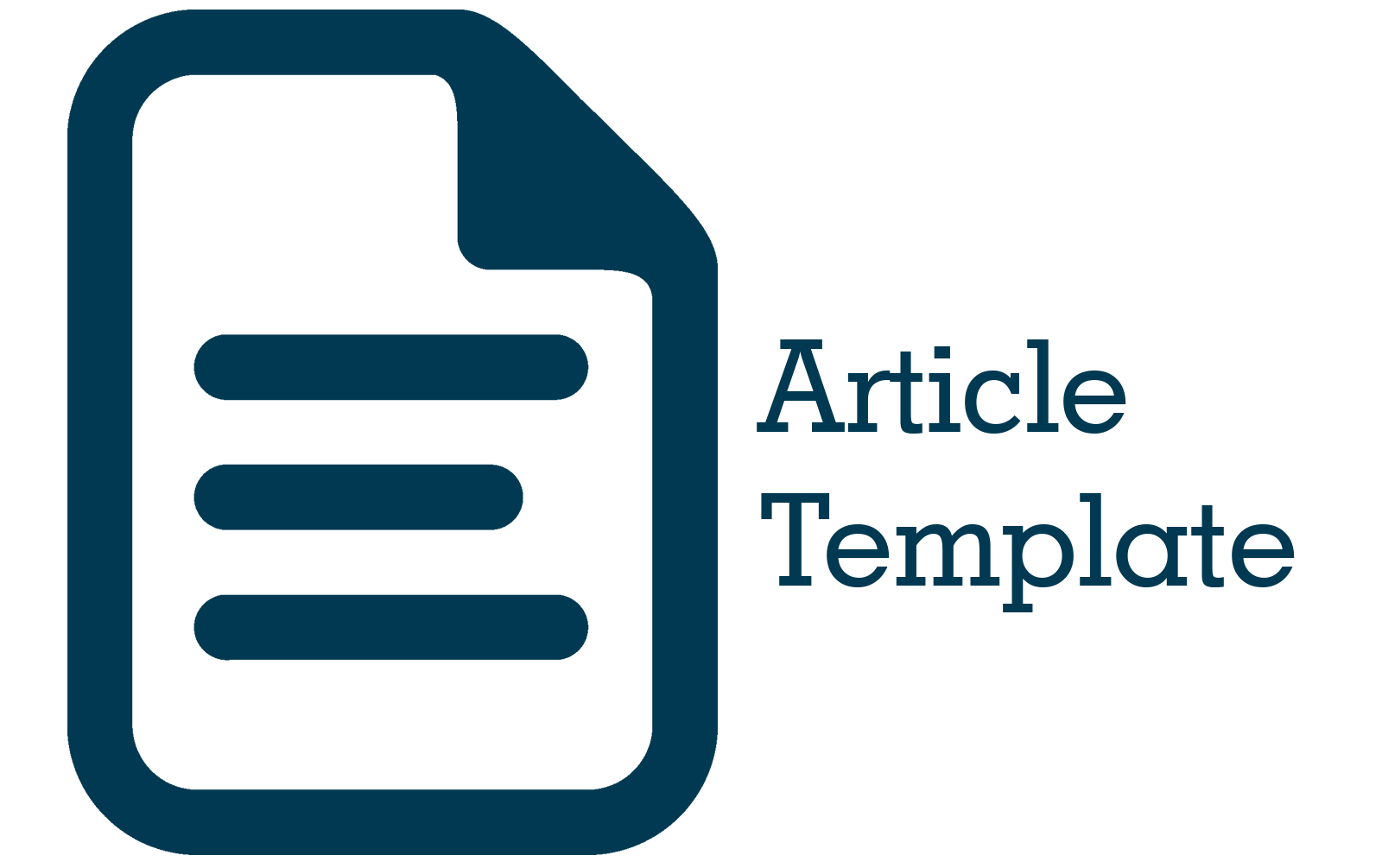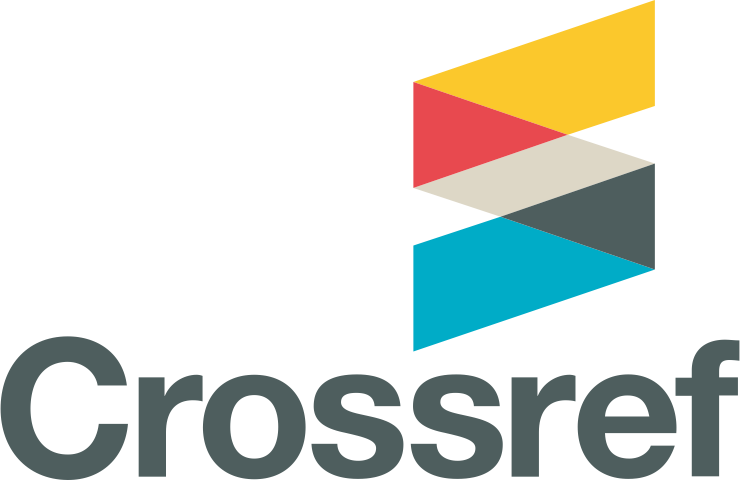Analisis Sistem Informasi Pendaftaran Online Mahasiswa Baru di Universitas XYZ Menggunakan Technology Acceptance Model
DOI:
https://doi.org/10.33633/tc.v20i2.4579Keywords:
Partial Least Squares-Structural Equation Modeling (PLS-SEM), Sistem Informasi Pendaftaran Online, Technology Acceptance Model (TAM)Abstract
Pandemi Covid-19 yang terjadi bersamaan dengan proses penerimaan mahasiswa baru membuat Universitas XYZ mengembangkan sistem informasi pendaftaran online untuk melayani proses tersebut pada tahun akademik 2020/2021 karena pembatasan sosial berskala besar. Tujuan penelitian ini untuk mengevaluasi tingkat penggunaan dan penerimaan pengguna terhadap sistem tersebut sehingga dapat memberikan rekomendasi dalam pemeliharaan sistem. Pengkajian dilakukan dengan menggunakan konstruk Technology Acceptance Model (TAM), yaitu Perceived Usefulness (PU), Perceived Ease of Use (PEU), Attitude Towards Using (ATU), Behavior Intention to Use (BIU), dan Actual Technology Use (ATU). Konstruk TAM dianalisis dengan metode Partial Least Squares-Structural Equation Modeling (PLS-SEM). Hasil pengujian membuktikan ada pengaruh positif dan signifikan antara PU terhadap ATG dengan nilai 2,398, PEU terhadap PU dengan nilai 12,539, PEU terhadap ATG dengan nilai 8,609, ATG terhadap BIU dengan nilai 5,902, serta BIU terhadap ATU dengan nilai t statistik 28,806. Sedangkan hubungan antara PU terhadap BIU tidak memiliki relasi yang signifikan karena nilai t-statistiknya kurang dari t-tabel, yaitu 1,912. Berdasarkan hasil penelitian, dapat disimpulkan bahwa kemudahan menggunakan sistem memiliki pengaruh yang kuat terhadap sikap pengguna. Sementara sikap pengguna mempengaruhi niat perilaku, dan niat perilaku pengguna mempengaruhi penggunaan teknologi secara aktual. Sehingga untuk pemeliharaan sistem, harus diperhatikan dari sisi kemudahan dalam penggunaan sistem.References
R. R. Patty, “Kasus Positif Covid-19 Pertama di Ambon, Maluku Tetapkan KLB Corona.” https://regional.kompas.com/read/2020/03/23/10150621/kasus-positif-covid-19-pertama-di-ambon-maluku-tetapkan-klb-corona (diakses Sep 28, 2020).
H. Tuhuteru, “Analisis Sentimen Masyarakat Terhadap Pembatasan Sosial Berksala Besar Menggunakan Algoritma Support Vector Machine,” Inf. Syst. Dev., vol. 5, no. 2, hal. 7–13, 2020.
R. R. Patty, “PSBB Ambon Dimulai 22 Juni, Wali Kota: Pelanggar Diberi Sanksi Tegas,” 2020. https://regional.kompas.com/read/2020/06/17/17342771/psbb-ambon-dimulai-22-juni-wali-kota-pelanggar-diberi-sanksi-tegas (diakses Sep 29, 2020).
N. A. Makarim, “Surat Edaran Menteri Pendidikan dan Kebudayaan Republik Indonesia Nomor 35952/MPK.A/HK/2020,” Mendikbud RI, hal. 1–2, 2020, [Daring]. Tersedia pada: https://www.kemdikbud.go.id.
P. C. H. Padmanaban dan Y. K. Sharma, “Implication of Artificial Intelligence in Software Development Life Cycle : A state of the art review,” vol. 6, no. 2, hal. 93–98, 2019.
V. Kumari dan S. Kulkarni, “Use of Artificial Intelligence in Software Development Life Cycle Requirements and its Model,” hal. 1857–1860, 2018.
F. D. Davis, “Perceived Usefulness, Perceived Ease of Use, and User Acceptance of Information Technology,” MIS Q., vol. 13, no. 3, hal. 319–340, 1989, doi: 10.5962/bhl.title.33621.
H. R. Farhan, LIS students’ perceptions of the use of LMS: an evaluation based on TAM (Kuwait case study), vol. 859, no. 2001. Springer International Publishing, 2018.
S. A. Salloum, A. Qasim Mohammad Alhamad, M. Al-Emran, A. Abdel Monem, dan K. Shaalan, “Exploring students’ acceptance of e-learning through the development of a comprehensive technology acceptance model,” IEEE Access, vol. 7, hal. 128445–128462, 2019, doi: 10.1109/ACCESS.2019.2939467.
G. M. Francom, A. Schwan, dan J. N. Nuatomue, “Comparing Google Classroom and D2L Brightspace Using the Technology Acceptance Model,” TechTrends, no. d, 2020, doi: 10.1007/s11528-020-00533-0.
P. W. Handayani, A. N. Hidayanto, A. A. Pinem, I. C. Hapsari, P. I. Sandhyaduhita, dan I. Budi, “Acceptance model of a Hospital Information System,” Int. J. Med. Inform., vol. 99, hal. 11–28, 2017, doi: 10.1016/j.ijmedinf.2016.12.004.
K. Thongkoo, K. Daungcharone, dan J. Thanyaphongphat, “Students’ Acceptance of Digital Learning Tools in Programming Education Course using Technology Acceptance Model,” 2020 Jt. Int. Conf. Digit. Arts, Media Technol. with ECTI North. Sect. Conf. Electr. Electron. Comput. Telecommun. Eng. ECTI DAMT NCON 2020, hal. 377–380, 2020, doi: 10.1109/ECTIDAMTNCON48261.2020.9090771.
F. H. Huang, “Applying the technology acceptance model to consumer behavior towards virtual reality service,” Adv. Intell. Syst. Comput., vol. 972, hal. 694–700, 2020, doi: 10.1007/978-3-030-19135-1_68.
A. Grani? dan N. Maranguni?, “Technology acceptance model in educational context: A systematic literature review,” Br. J. Educ. Technol., vol. 50, no. 5, hal. 2572–2593, 2019, doi: 10.1111/bjet.12864.
C. M. Ringle, S. Wende, dan J.-M. Becker, “SmartPLS 3.” SmartPLS, Bönningstedt, 2015, [Daring]. Tersedia pada: http://www.smartpls.com.
J. F. Hair, J. J. Risher, M. Sarstedt, dan C. M. Ringle, “When to use and how to report the results of PLS-SEM,” Eur. Bus. Rev., vol. 31, no. 1, hal. 2–24, 2019, doi: 10.1108/EBR-11-2018-0203.
M. Sarstedt dan J. H. Cheah, “Partial least squares structural equation modeling using SmartPLS: a software review,” J. Mark. Anal., vol. 7, no. 3, hal. 196–202, 2019, doi: 10.1057/s41270-019-00058-3.
M. I. Nasution, M. Fahmi, Jufrizen, Muslih, dan M. A. Prayogi, “The Quality of Small and Medium Enterprises Performance Using the Structural Equation Model-Part Least Square (SEM-PLS),” J. Phys. Conf. Ser., vol. 1477, no. 5, hal. 1–8, 2020, doi: 10.1088/1742-6596/1477/5/052052.
M. R. Ab Hamid, W. Sami, dan M. H. Mohmad Sidek, “Discriminant Validity Assessment: Use of Fornell & Larcker criterion versus HTMT Criterion,” J. Phys. Conf. Ser., vol. 890, no. 1, 2017, doi: 10.1088/1742-6596/890/1/012163.
Downloads
Published
Issue
Section
License
Copyright (c) 2021 Hennie Tuhuteru, Pether John Arlooy, Laipeny Melianus Imasuly

This work is licensed under a Creative Commons Attribution-NonCommercial 4.0 International License.
License Terms
All articles published in Techno.COM Journal are licensed under the Creative Commons Attribution-NonCommercial 4.0 International (CC BY-NC 4.0). This means:
1. Attribution
Readers and users are free to:
-
Share – Copy and redistribute the material in any medium or format.
-
Adapt – Remix, transform, and build upon the material.
As long as proper credit is given to the original work by citing the author(s) and the journal.
2. Non-Commercial Use
-
The material cannot be used for commercial purposes.
-
Commercial use includes selling the content, using it in commercial advertising, or integrating it into products/services for profit.
3. Rights of Authors
-
Authors retain copyright and grant Techno.COM Journal the right to publish the article.
-
Authors can distribute their work (e.g., in institutional repositories or personal websites) with proper acknowledgment of the journal.
4. No Additional Restrictions
-
The journal cannot apply legal terms or technological measures that restrict others from using the material in ways allowed by the license.
5. Disclaimer
-
The journal is not responsible for how the published content is used by third parties.
-
The opinions expressed in the articles are solely those of the authors.
For more details, visit the Creative Commons License Page:
? https://creativecommons.org/licenses/by-nc/4.0/













